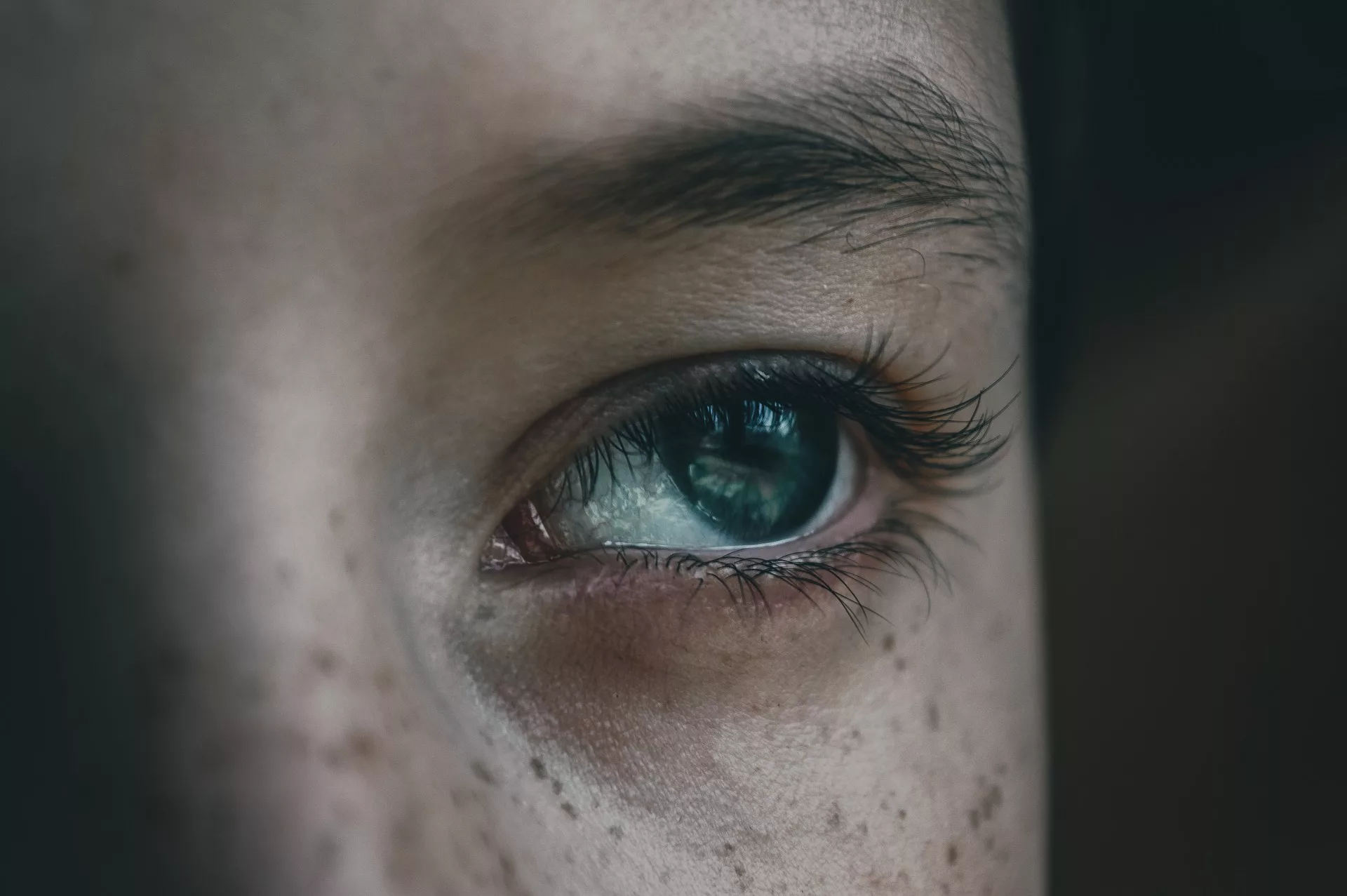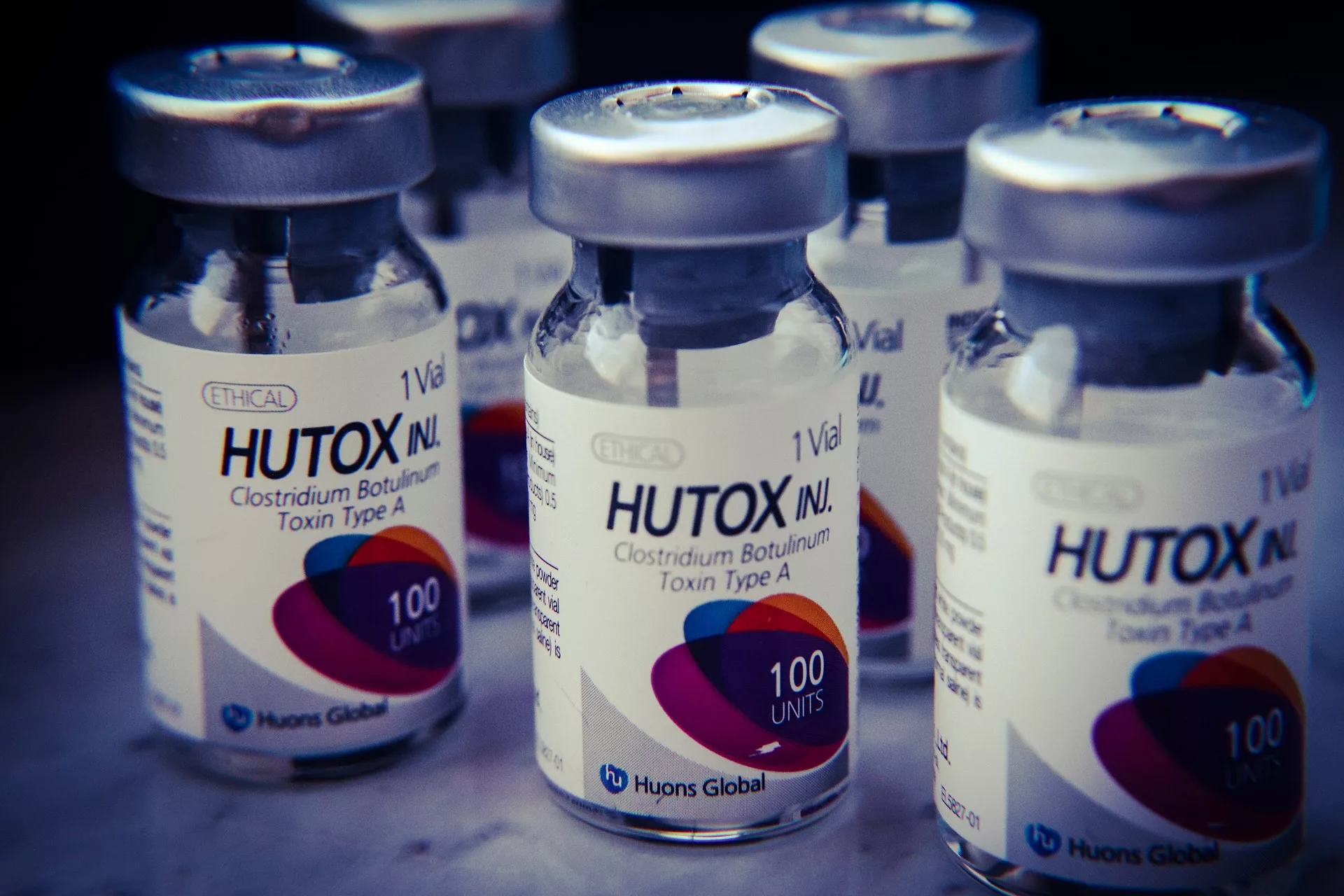Myokymia, also referred to as eyelid twitching or eyelid spasms, is painless, involuntary, and uncontrolled twitching of the eyelid, which usually resolves on its own. This condition of muscle spasm mostly affects the lower eyelid, but the upper lid may also be affected. It is the most common type of facial myokymia (muscle twitching). Eye contractions are without any underlying muscle weakness and are described as:
- Spontaneous
- Continuous
- Rhythmic
The transient issue affects only one eye; therefore, tic is almost always unilateral. The intensity (barely noticeable to evident irritation) and duration (a few minutes to hours or even days) of twitching varies between individuals. In most cases, twitching results from environmental factors like stress, irritation, lack of sleep, or excessive caffeine intake. However, sometimes, persistent myokymia is an indication of some underlying serious health condition.
 Eyelid myokymia is also known as “medical student’s disease” because it is highly prevalent in young, healthy students of the medical faculty. Reports show that it is a common phenomenon in medical students, with a high incidence during periods of intense studying (and consequent stress).1Hadžić, Sanela & Kukić, Ismir & Zvorničanin, Jasmin. (2016). The Prevalence of Eyelid Myokymia in Medical Students. British Journal of Medicine & Medical Research. 14. 1-6. 10.9734/BJMMR/2016/24910.
Eyelid myokymia is also known as “medical student’s disease” because it is highly prevalent in young, healthy students of the medical faculty. Reports show that it is a common phenomenon in medical students, with a high incidence during periods of intense studying (and consequent stress).1Hadžić, Sanela & Kukić, Ismir & Zvorničanin, Jasmin. (2016). The Prevalence of Eyelid Myokymia in Medical Students. British Journal of Medicine & Medical Research. 14. 1-6. 10.9734/BJMMR/2016/24910.
Types Of Eyelid Twitching
Myokymia is one type of eyelid twitching. To understand this condition, it is important to differentiate it from similar maladies.
Hemifacial Spasm Vs. Myokymia
Hemifacial spasm (HFS) is a neurological disorder that causes involuntary twitching of facial muscles. In several cases, unilateral eye twitching is the initial presentation that eventually spreads to different facial muscles. Patients experience unilateral episodic eyelid twitching, which spreads to other facial muscles. Physicians can mistake hemifacial spasms for blepharospasm or facial myokymia.2Chopade, T. R., & Bollu, P. C. (2018). Hemifacial spasm.
Blepharospasm Vs. Myokymia
Myokymia is characterized by mild and gentle tugs unassociated with any serious complication. In contrast, benign essential blepharospasm (BEB) is a chronic neurological condition involving involuntary, forceful closure of both eyelids due to muscle dystonia.
BEB involves episodic, forceful eyelid contractions that can lead to involuntary closure of the eyes, impairing vision, and daily activities. The condition may be an initial symptom of craniocervical dystonia, which spreads to other parts of the body.3Waln, O., & LeDoux, M. S. (2011). Blepharospasm plus cervical dystonia with predominant anterocollis: A distinctive subphenotype of segmental craniocervical dystonia. Tremor and Other Hyperkinetic Movements, 1. Bilateral blepharospasm is also a presentation of cranial dystonia, i.e., Meige syndrome.4Ma, H., Qu, J., Ye, L., Shu, Y., & Qu, Q. (2021). Blepharospasm, oromandibular dystonia, and meige syndrome: clinical and genetic update. Frontiers in neurology, 12, 630221.
Unlike myokymia, which affects young individuals, blepharospasm is a disease of the elderly (50-70 year olds). Patients also experience facial/neck spasms and blurry vision.
Myokymia Vs. Fasciculations
Fasciculation can affect any muscle, including the eyelid muscles. Benign muscle fasciculations may mimic myokymia. However, there are subtle differences that can help differentiate between the two. A fasciculation is an intermittent, fast, and non-rhythmic contraction of the muscle, whereas myokymia is a rhythmic and slow contraction of the eyelid. Fasciculations are mostly seen in the limb muscles.
Myokymia Symptoms
Most patients experience sporadic, involuntary twitching of the lower eyelid. It usually lasts for a few seconds or minutes and mostly occurs during physical or mental stress. Some patients also report occasional spasms that lead to forced shutting of the lower eyelid. The twitching is painless and self-limiting. Therefore, you should consult a healthcare professional if the symptoms persist for long periods and tend to affect your quality of life.
What Causes Myokymia?
It is important to understand the anatomy of the eye before explaining the suspected mechanism of myokymia. Orbicularis oculi is the eye muscle located in the eyelids. Its main function is to close the eyelids.5Tong, J., Lopez, M. J., & Patel, B. C. (2017). Anatomy, head and neck, eye orbicularis, oculi muscle. The facial nerve innervates the orbicularis muscles.

The exact mechanism of this condition’s occurrence is unknown. However, experts believe that hyperexcitation of the nerves can induce facial myokymias. According to a study, inherited peripheral nerve hyperexcitability syndrome causes facial myokymia.6Camelo, C. G., Silva, A. M. S., Moreno, C. A. M., Matsui-Júnior, C., Heise, C. O., Pedroso, J. L., & Zanoteli, E. (2020). Facial myokymia in inherited peripheral nerve hyperexcitability syndrome. Practical Neurology, 20(3), 253-255. Many believe that specific triggers can transiently cause hyper excitation of the facial nerve, leading to myokymia.
The most common causes of myokymia include:
Anxiety & Fatigue:
Mental stress and anxiety can cause this condition. Eyelid twitching is frequently seen in medical students and is attributed to stress. Female students are more likely to be anxious for exams and thus more prone to myokymia.7Hadžić, S., Kukić, I., & Zvorničanin, J. (2016). The prevalence of eyelid myokymia in medical students. British Journal of Medicine and Medical Research, 14(6), 1-6.
Sleep deprivation:
Lack of sleep can induce facial muscle twitching in otherwise healthy individuals. People staying awake due to overworking may suffer from eyelid twitching. Fatigue and poor sleep can induce eyelid myokymia.8Kim, J., Hyung, S. W., Han, S. K., Lee, J. Y., Yu, H. J., & Sunwoo, M. K. (2021). Will Hypomagnesemia Induce Benign Eyelid Myokymia? Korean Journal of Health Promotion, 21(4), 129-133.
Caffeine Intake:
Excessive caffeine intake is identified as a causative factor for myokymia. Lid twitching is seen in young individuals taking an excess of soft drinks, tea, or coffee.9Trifonova, K., Slaveykov, K., & Dzhelebov, D. (2019). EYELID MYOKYMIA–IS IT A WARNING SIGN? Science & Research.
Dehydration:
Electrolyte imbalance and dehydration can promote muscle spasms. Thus, it can lead to myokymia.
COVID-19:
According to a study, eyelid myokymia appeared in 15 COVID-19 patients. It was concluded that eyelid myokymia might be a presentation of the recovery phase in COVID-19 patients.10Khan, H. A., Shahzad, M. A., Jahangir, S., Iqbal, J., Juwa, S. A., Khan, Q. A., … & Iqbal, F. (2022). Eyelid myokymia—a presumed manifestation of coronavirus disease 2019 (COVID-19). SN comprehensive clinical medicine, 4, 1-6.
Alcohol abuse:
Chronic alcohol intake can have an adverse impact on eye health. Myokymia, pupil dilation, and diplopia are some of the commonly seen side effects.11Dhingra, D., Kaur, S., & Ram, J. (2019). Illicit drugs: effects on the eye. Indian Journal of Medical Research, 150(3), 228-238.
Magnesium deficiency:
Low serum magnesium levels are linked to seizures and disorders.12Bianchi, F., Simoncini, C., Brugnoni, R., Ricci, G., & Siciliano, G. (2020). Neuromuscular tetanic hyperexcitability syndrome associated with a heterozygous Kv1. 1 N255D mutation with normal serum magnesium levels. Acta Myologica, 39(1), 36. But there is a controversy on the impact of magnesium deficiency on eyelid twitching.
Drugs:
Certain drugs can cause uncontrolled, persistent eyelid twitching. In one case, myokymia was linked to Topiramate (an anti-epileptic drug) intake. Discontinuation of the drug resolved symptoms.13Khalkhali, M. (2016). Topiramate-induced persistent eyelid myokymia. Case Reports in Psychiatry, 2016. Another drug, gabapentin, is known to cause movement disorders such as dystonia and myokymia etc.14Rissardo, J. P., Medeiros Araujo de Matos, U., & Fornari Caprara, A. L. (2023). Gabapentin-Associated Movement Disorders: A Literature Review. Medicines, 10(9), 52. Other drugs on the list include clozapine and flunarizine, etc.
Multiple sclerosis (MS):
It is an auto-immune disorder that affects the nervous system (brain and spinal cord). In rare cases, facial myokymia and abnormal movements of the eyelid are the first symptoms to appear.15Parr, A. M. C., Bashford, J., & Silber, E. (2022). Facial myokymia as the presenting feature of multiple sclerosis. Practical Neurology, 22(3), 233-234. In a study, 1% of MS patients presented with myokymia.16Etemadifar, M., Sabouri, M., Zarepour, M., Sigari, A. A., & Salari, M. (2022). Facial involvement in multiple sclerosis. Multiple Sclerosis and Related Disorders, 67, 104110.
Risk factors include female gender and cold weather. Individuals prone to developing this condition must be cautious during winter.
Can Vitamin Deficiency Cause Myokymia?
Vitamin deficiencies can lead to multiple muscular issues, including spasms and involuntary contractions. A study concluded that vitamin B12 (cobalamin) and folate deficiencies can induce intermittent muscle spasms.17Zhou, J., & Effiong, U. (2021). Isolated pyridoxine deficiency presenting as muscle spasms in a patient with type 2 diabetes: a case report and literature review. The American Journal of the Medical Sciences, 361(6), 791-794. However, there is a lack of evidence to support the link between vitamin deficiency and myokymia. In one study, newborns of vitamin B12 deficient mothers developed infantile tremor syndrome. In this condition, the patient presents with twitching of facial muscles (mouth, angle of eye, and eyelids).18Dilber, B., & Reis, G. P. (2021). Infantile tremor syndrome secondary to peroral vitamin B12 replacement therapy: a report of two cases with myoclonus. The Turkish Journal of Pediatrics, 63(3), 510-515. This shows that there may be some link between vitamin B deficiency and eyelid myokymia.
Diagnosing Complications Associated With Myokymia
Eyelid twitching isn’t a health condition itself but may be the presentation of an underlying disease. To rule out any neurological issue linked to involuntary twitching, healthcare professionals order imaging scans of the patients. MRI and CT scans look for any masses and nerve defects in the brain/spinal cord and along the pathway of the nerves. Imaging guidance helps rule out facial nerve pathologies (which innervates the lower eyelid).
Myokymia Treatment
Most patients do not receive treatment as the disease is non-symptomatic and self-resolving. Doctors adopt conservation management if the eyelid spasms don’t disappear within a few days.
Stress and poor sleep are the major causative agents of this condition. Therefore, your doctor will advise you to rest. Any activities that impact sleep quality must be abandoned. This includes limiting caffeine and alcohol intake and reducing workload.

In persistent myokymia cases, doctors prescribe Botox injections. The botulinum toxin in the injection helps relieve the orbicularis oculi muscles. Botox injection has positive results and is given in cases of facial spams such as blepharospasm, myokymia, and dystonia.19Winges, K. M., & Yates, B. (2020). Blepharospasm and Hemifacial Spasm. Albert and Jakobiec’s Principles and Practice of Ophthalmology, 1-16. Surgical excision of the orbicularis muscle (orbicularis myectomy) fibers is done in blepharospasm but rarely in myokymia.
Myokymia Home Remedies
You can manage this condition with some simple home remedies. A simple way of alleviating eyelid twitching is applying warm compresses to the eye. Heat application is known to reduce muscle spasms.
Artificial tears keep the eye lubricated and can help ease the twitching. However, eye drops did not work on a 26-year-old man suffering from vision issue issues and myokymia. Astonishingly, treatment with oral cannabidiol (CBD) made the patient symptom-free.20Ma, J., Labbé, S., & Micieli, J. A. (2021). Successful Treatment of Superior Oblique Myokymia With Cannabidiol Oil. Journal of Neuro-Ophthalmology, 41(2), e192-e193.
However, make sure to consult your doctor before using any strategy.
Myokymia Prevention
To prevent this condition in the future, you should modify your lifestyle habits and daily routine:
- Giving up negative habits like smoking and drinking. It can improve your overall health and minimize chances of facial twitching.
- Practice yoga or meditation to reduce stress levels.
- Do not carry any gadgets (smartphones, tablets) to bed. This eases the eye muscles and enhances sleep quality.
Final Word
Myokymia is a harmless eye condition characterized by rhythmic and sporadic eye twitching that resolves itself. In most cases, underlying stress, sleep deprivation, caffeine intake, and drug abuse (alcohol) trigger this condition. It can last for a few minutes to even days. Generally, no treatment is required. However, Botox injections respond well when given in persistent myokymia patients.
Refrences
- 1Hadžić, Sanela & Kukić, Ismir & Zvorničanin, Jasmin. (2016). The Prevalence of Eyelid Myokymia in Medical Students. British Journal of Medicine & Medical Research. 14. 1-6. 10.9734/BJMMR/2016/24910.
- 2Chopade, T. R., & Bollu, P. C. (2018). Hemifacial spasm.
- 3Waln, O., & LeDoux, M. S. (2011). Blepharospasm plus cervical dystonia with predominant anterocollis: A distinctive subphenotype of segmental craniocervical dystonia. Tremor and Other Hyperkinetic Movements, 1.
- 4Ma, H., Qu, J., Ye, L., Shu, Y., & Qu, Q. (2021). Blepharospasm, oromandibular dystonia, and meige syndrome: clinical and genetic update. Frontiers in neurology, 12, 630221.
- 5Tong, J., Lopez, M. J., & Patel, B. C. (2017). Anatomy, head and neck, eye orbicularis, oculi muscle.
- 6Camelo, C. G., Silva, A. M. S., Moreno, C. A. M., Matsui-Júnior, C., Heise, C. O., Pedroso, J. L., & Zanoteli, E. (2020). Facial myokymia in inherited peripheral nerve hyperexcitability syndrome. Practical Neurology, 20(3), 253-255.
- 7Hadžić, S., Kukić, I., & Zvorničanin, J. (2016). The prevalence of eyelid myokymia in medical students. British Journal of Medicine and Medical Research, 14(6), 1-6.
- 8Kim, J., Hyung, S. W., Han, S. K., Lee, J. Y., Yu, H. J., & Sunwoo, M. K. (2021). Will Hypomagnesemia Induce Benign Eyelid Myokymia? Korean Journal of Health Promotion, 21(4), 129-133.
- 9Trifonova, K., Slaveykov, K., & Dzhelebov, D. (2019). EYELID MYOKYMIA–IS IT A WARNING SIGN? Science & Research.
- 10Khan, H. A., Shahzad, M. A., Jahangir, S., Iqbal, J., Juwa, S. A., Khan, Q. A., … & Iqbal, F. (2022). Eyelid myokymia—a presumed manifestation of coronavirus disease 2019 (COVID-19). SN comprehensive clinical medicine, 4, 1-6.
- 11Dhingra, D., Kaur, S., & Ram, J. (2019). Illicit drugs: effects on the eye. Indian Journal of Medical Research, 150(3), 228-238.
- 12Bianchi, F., Simoncini, C., Brugnoni, R., Ricci, G., & Siciliano, G. (2020). Neuromuscular tetanic hyperexcitability syndrome associated with a heterozygous Kv1. 1 N255D mutation with normal serum magnesium levels. Acta Myologica, 39(1), 36.
- 13Khalkhali, M. (2016). Topiramate-induced persistent eyelid myokymia. Case Reports in Psychiatry, 2016.
- 14Rissardo, J. P., Medeiros Araujo de Matos, U., & Fornari Caprara, A. L. (2023). Gabapentin-Associated Movement Disorders: A Literature Review. Medicines, 10(9), 52.
- 15Parr, A. M. C., Bashford, J., & Silber, E. (2022). Facial myokymia as the presenting feature of multiple sclerosis. Practical Neurology, 22(3), 233-234.
- 16Etemadifar, M., Sabouri, M., Zarepour, M., Sigari, A. A., & Salari, M. (2022). Facial involvement in multiple sclerosis. Multiple Sclerosis and Related Disorders, 67, 104110.
- 17Zhou, J., & Effiong, U. (2021). Isolated pyridoxine deficiency presenting as muscle spasms in a patient with type 2 diabetes: a case report and literature review. The American Journal of the Medical Sciences, 361(6), 791-794.
- 18Dilber, B., & Reis, G. P. (2021). Infantile tremor syndrome secondary to peroral vitamin B12 replacement therapy: a report of two cases with myoclonus. The Turkish Journal of Pediatrics, 63(3), 510-515.
- 19Winges, K. M., & Yates, B. (2020). Blepharospasm and Hemifacial Spasm. Albert and Jakobiec’s Principles and Practice of Ophthalmology, 1-16.
- 20Ma, J., Labbé, S., & Micieli, J. A. (2021). Successful Treatment of Superior Oblique Myokymia With Cannabidiol Oil. Journal of Neuro-Ophthalmology, 41(2), e192-e193.

